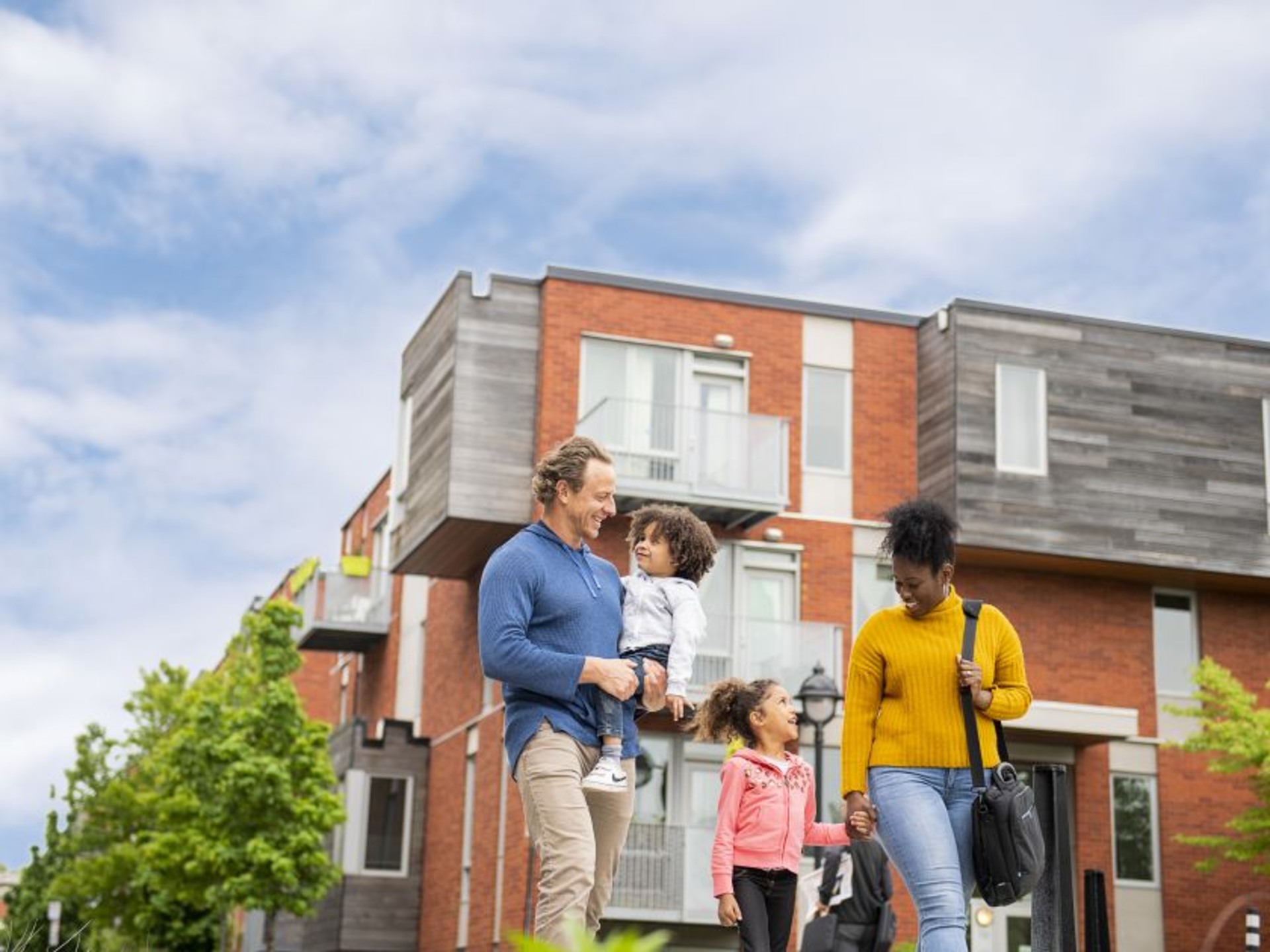Montreal, a metropolis to live in
26 Aug 2019
Like other large urban centres around the world, Montreal is facing a growing housing challenge. Available housing is rare, rents and real estate prices are soaring, and thousands of households are spending a huge chunk of their income on housing. We need to act now, before it is too late.
What will Montreal look like in 10, 20 or 50 years if we let market forces shape its development? Will we be able to preserve the friendly, diversified neighbourhoods for which Montreal is renowned? The lively alleys resonating with children’s laughter? The bustling downtown with its festivals and prized residential real estate? This city on the human scale where people of all ages, all social statuses and nationalities coexist harmoniously?
Rethinking housing development
To meet the varied needs of its population, the Ville de Montréal is introducing a new tool: the bylaw for a diverse metropolis.
This bylaw introduces a new requirement for all residential projects of 450 square metres or more (equivalent to about five units). Before obtaining a construction permit, builders must sign an agreement with the city to improve the supply of social, affordable and family housing.
The bylaw sets out obligations along with various compliance options: residential construction, transfer of land, financial contribution, etc. The final result is a contribution corresponding to 20 per cent social housing, 20 per cent affordable housing and 20 per cent family housing. The latter target is distributed throughout the project. Note that these percentages vary according to location and to the options chosen by the builder.
Giving families the means to stay in Montreal
This is not the first measure that Montreal has put in place to manage housing development. In fact, the new bylaw will replace the Strategy for the inclusion of affordable housing in new residential projects, which the city adopted in 2005.
The Ville de Montréal has drawn on its experience since introducing the strategy to correct its limitations. Whereas the strategy was an incentive measure, the new bylaw requires that every project contribute to the city’s objectives in terms of residential mix. The former targets of 15 per cent for social and affordable housing have now been raised to 20 per cent. An equivalent target has been set for family housing, which was not previously considered.
The city has endeavoured to make this bylaw a viable, predictable tool for the industry, adapted to the diverse realities of the Montreal real estate market. It, therefore, conducted rigorous analyses, including an economic impact study. Several experts and private and social developers were also consulted.
A few definitions
Social housing: Social housing is housing whose construction is subsidized by a social and community housing program run by the Quebec government. Currently, this corresponds to the AccèsLogis Québec and AccèsLogis Montréal programs. Social and community housing is developed by co-operatives, non-profit organizations, and the Office municipal d’habitation de Montréal.
Affordable housing: Under the bylaw, housing is considered affordable if its price or rent is situated below the ceilings defined by the bylaw. These ceiling prices are equal to or slightly less than the market price for housing units of modest design.
Familyhousing: The bylaw defines family housing as a housing unit with at least three bedrooms and sufficient space for a family, namely a gross area of 86 square metres for the “downtown” and “inner neighbourhoods” territories of application, and a gross area of 96 square metres for the “periphery” and “outskirts” territories of application. A family housing unit may be social, affordable or at market price. Such housing may take the form of rental or homeownership.
Next steps
The Office de consultation publique de Montréal will organize a public consultation on the proposed bylaw in fall 2019.
The adoption of the final bylaw is slated for early 2020, and the bylaw should take effect on January 1, 2021.
